Hens and Chicks are stem-less succulents that need minimum attention to grow. They are fast-growing succulents that produce many shoots every season. But how fast Hens and Chicks grow might be a question that strikes your mind if you are considering growing them.
In general, Hens and Chicks will grow about 3 to 4 inches tall and spread about 6 to 18 inches in a couple of months. After that, they will start producing offsets, and you can expect them to triple in size by the end of the year. You can clip the small plants and replant them to multiply them.
However, Hens and Chicks grow tall when they are about to flower. We will explain more about the growth rate of Hens and Chicks in this article. Read till the end to know the factors determining the growth rate of these succulents.
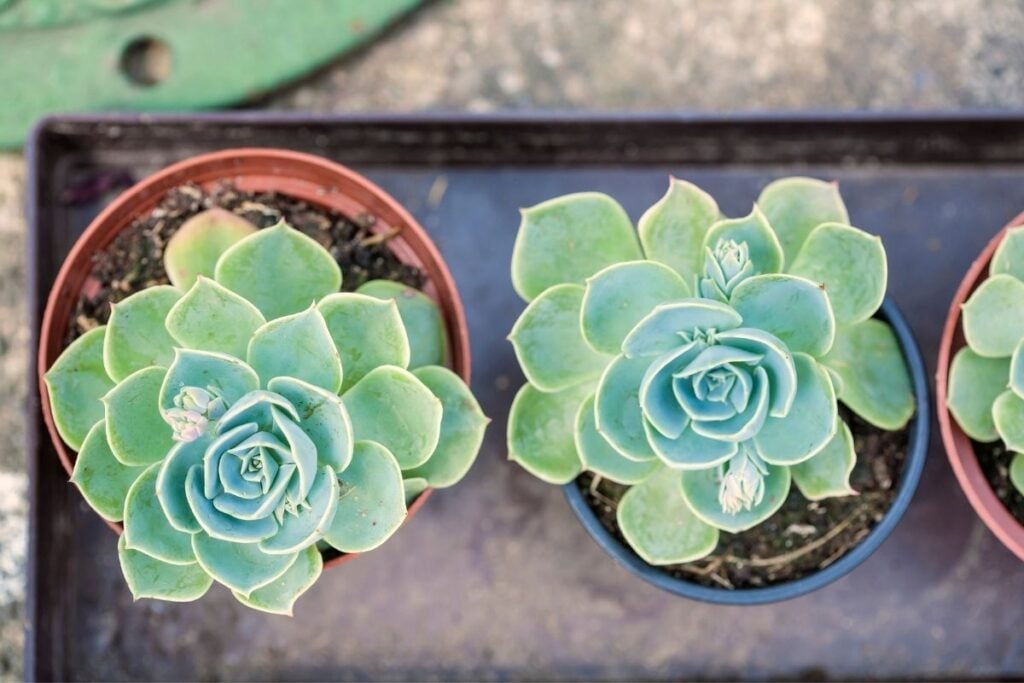
How big and how fast do Hens and Chicks grow?
Hens and Chicks are fast-growing succulents that grow up to 3 to 4 inches in height and spread about 6 to 18 inches wider. Hens and Chicks do not grow tall. Some dwarf varieties can barely cross 3 inches in height.
These succulents frequently spread and cover the ground or roof.
Because Hens and Chicks are fast-growing succulents, they can grow from 2 inches to 4 inches rarely and spread about 3 to 4 feet within a few months or a year.
Hens and Chicks are more about spreading and multiplying. One hen is expected to produce at least 2 to 6 chicks in every growing season.
However, Hens and Chicks will slow down their growth in winter. They remain dormant. When you see them growing slowly in the winters, do not think of them as a slow-grower. They stop growing or grow very slowly, depending on the cold.
Some people take Hens and Chicks indoors during winters. It doesn’t keep the plant dormant, but they continue growing slowly. You can enjoy growing Hens and Chicks indoors without any dormancy.
How fast do Hens and Chicks multiply?
You can expect one hen to produce at least 3 to 6 chicks in one growing season. It may vary depending on the variety you are growing. In general, Hens and Chicks multiply three times in one year.
The larger varieties will produce only 3 to 5 Chicks in one season. However, the sizes of these Chicks are large enough. They are the daughter plants because they are bigger than the baby offsets.
The smaller varieties can produce about 10 to 15 Chicks in one growing season.
How far apart should the Hens and Chicks be planted for spreading quickly?
If you want to see your Hens and Chicks proliferate in their ideal size, you must take care of the distance between each plant. You should at least maintain 4 to 6 inches of distance to allow the Hens and Chicks to grow and multiply at a faster pace to reach their maturity.
Planting them 4 inches apart not only speeds up their growth rate but also allows the Hens to produce ideal-sized chicks. However, many other factors are responsible for speeding up the growth rate of Hens and Chicks.
Looking for gardening supplies? We have tested 100's of products before recommending them to you guys. Check out our best pick below:
| Image | Gardening Supplies | Best Price? |
|---|---|---|
 Top
Top Top
Top | Raised Garden Bed Kit | Check On Amazon |
 | XLUX Soil Moisture Meter, Plant Water Monitor, Soil Hygrometer Sensor for Gardening, Farming, Indoor and Outdoor Plants, No Batteries Required | No Results |
 Top
Top Top
Top | 82 Pcs Garden Tools Set and Extra Succulent Tools Set | Check On Amazon |
 | Joeys Garden Expandable Garden Hose with 8 Function Hose Nozzle, Lightweight Anti-Kink Flexible Garden Hoses, Extra Strength Fabric with Double Latex Core, (50 FT, Black) | No Results |
 Top
Top Top
Top | Dual Chamber Compost Tumbler | Check On Amazon |
 Top
Top Top
Top | Sunnyglade Plant Stakes | Check On Amazon |
 Top
Top Top
Top | Organic Cold Pressed Neem Seed Oil | Check On Amazon |
 Top
Top Top
Top | Mighty Mint Gallon :-Insect and Pest Control Peppermint Oil | Check On Amazon |
 Top
Top Top
Top | Scotts DiseaseEx Lawn Fungicide | Check On Amazon |
 Top
Top Top
Top | Jacks Classic 20-20-20 All Purpose Fertilizer | Check On Amazon |
 Top
Top Top
Top | 30,000 Seeds Pollinator Attracting Wildflower Mixture | Check On Amazon |
 Top
Top Top
Top | Survival Vegetable Seeds Garden Kit-Over 16,000 Seeds | Check On Amazon |
How fast do propagated Hens and Chicks root?
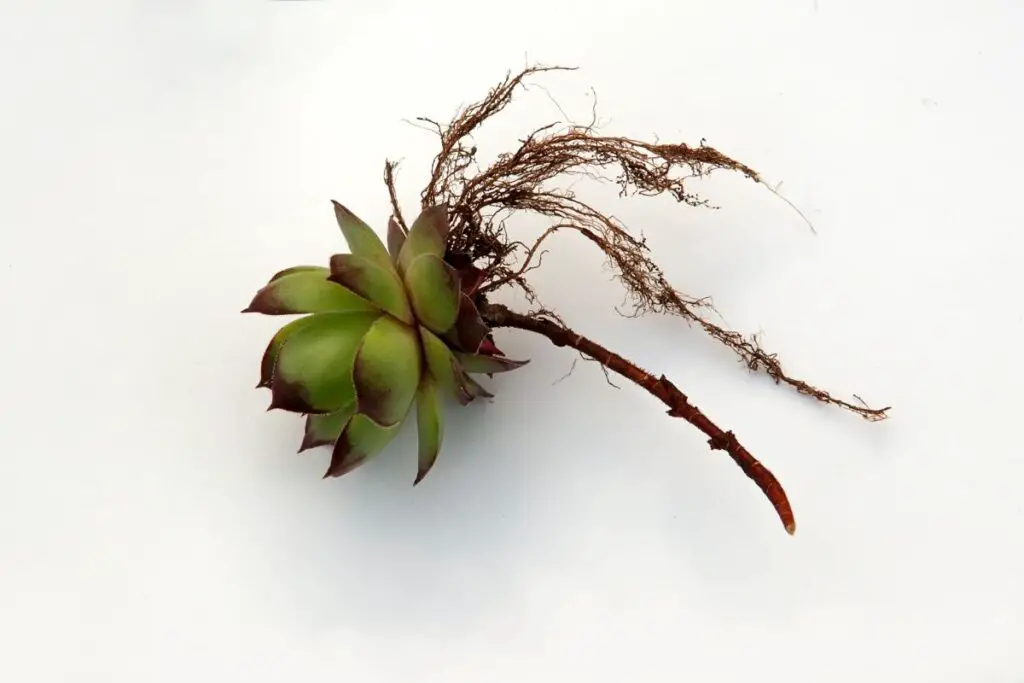
Hens and Chicks are propagated in two ways – vegetative and generative. The former means dividing daughter plants, and the latter means by seeds.
Choose the larger offsets to divide and transplant. They will root within a few months. But if you take too small offsets, they will take almost a full year to grow roots.
As Hens and Chicks are fast growers, it will take only 4 to 5 weeks to grow roots.
You can also propagate Hens and Chicks by seeds. But, this is a time-consuming process. You have to wait until the plant bloom and die. You can then collect the seeds from the faded flower and sow them.
Primarily, start seed propagation indoors so that you can control and manipulate their growing conditions and they can germinate successfully.
If they did not sprout out within 4 to 5 weeks, you have to store them in the refrigerator for a month. After that, bring them out and again repeat their growing conditions.
They don’t germinate quickly like the vegetative ones. Sometimes, the seeds will take 4 weeks to germinate or even one year.
Factors determining the growth rate of Hens and Chicks
In general, Hens and Chicks are both fast and slow-growing succulents. They grow, multiply and spread quite fast, but they don’t grow tall.
Though they do not need much attention from you to grow faster, specific care tips can encourage these succulents to grow and spread more quickly.
Any stress can decrease their growth rate. The healthier they remain, the faster they will grow and spread. Following the care tips will also keep them in good condition for years. So let’s dive into it.
Plant them in a sunny spot
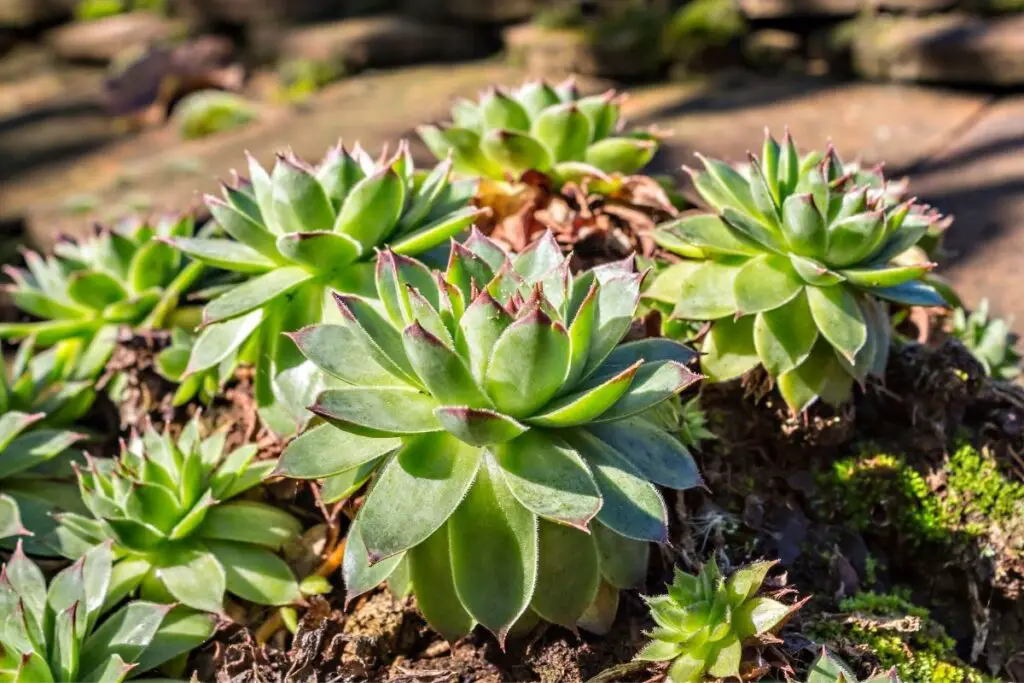
Hens and Chicks require lots of sunlight to grow fast and healthy. They need around 6 to 8 hours of full sun, without protection from the daytime or afternoon sun.
The dwarf varieties will need 4 to 6 hours of morning sun and need protection from the daytime and afternoon sunlight, especially during summer.
A good amount of sunlight will keep the Hens and Chicks in good health, stimulating them to grow faster. It maintains the excellent functioning of photosynthesis and the balance of the plant.
The better they function, the faster they will grow and multiply.
When the plant gets stretchy and leggy, that means they need sunlight. If you find brown patches on the surface of the leaves, it indicates that they are receiving sunlight more than needed.
In such inappropriate conditions, the plant will have slow growth. If you want them to grow faster, maintain proper light conditions.
Also read: How Much Sun Do Hen And Chicks Need? (Light Requirement)
The soil must be well-drained
For Hens and Chicks, the soil doesn’t need to be rich or fertile. The only thing that matters is proper drainage. These succulents are drought-tolerant but not damp-tolerant.
The best soil would be a mixture of garden soil and sand in the ratio of 1:1. This mixture will drain excess water and also retain moisture. It will also be beneficial for potted Hens and Chicks.
Hens and Chicks are significantly less demanding when it comes to soil requirements. In their native habitat, they will grow over big rock slabs or gravel beds with minimal soil.
Rocky soil is also best for Hens and Chicks because they don’t hold moisture long.
If you want your Hens and Chicks plant to grow fast, make sure that the soil is well-drained, having a pH level from 6.6 to 7.5.
If it holds water for long, it will suffer from overwatering, which can slow down its growth and give rise to other serious issues.
If you are planting Hens and Chicks in a container, other than garden-sandy soil, you can use cactus or succulent soil. It has perlite and pumice that will improve drainage.
Also read: What Kind Of Soil Do You Use For Hens And Chicks? (+Best Soil Mix)
Water the Hens and Chicks to keep them consistently moist.
In general, they need watering once a week. Hens and Chicks require significantly less amount of water. Their leaves hold moisture which keeps them hydrated most of the time.
Overwatering the Hens and Chicks will delay their growth and invite pests and fungus.
If you want to encourage growth in your Hens and Chicks, maintain good watering. Following a regime doesn’t work much, still watering them once a week will be good. If they are growing over gravels or rock beds, water them regularly.
However, don’t take them for granted because of their endurance for droughts by not watering them. Hens and Chicks will have an optimal growth rate if they remain consistently moist.
If they are growing on rocky beds, they will require daily watering. Hens and Chicks will persist in droughts, but they also need to be hydrated.
Keep checking the soil moisture. Water when the top 1-2 inches of the soil feels dry. In this way, you can ignore both overwatering and underwatering.
Also read: How Much Water Do Hens And Chicks Need? (Underwatering+Overwatering)
Fertilizing Hens and Chicks increases growth.
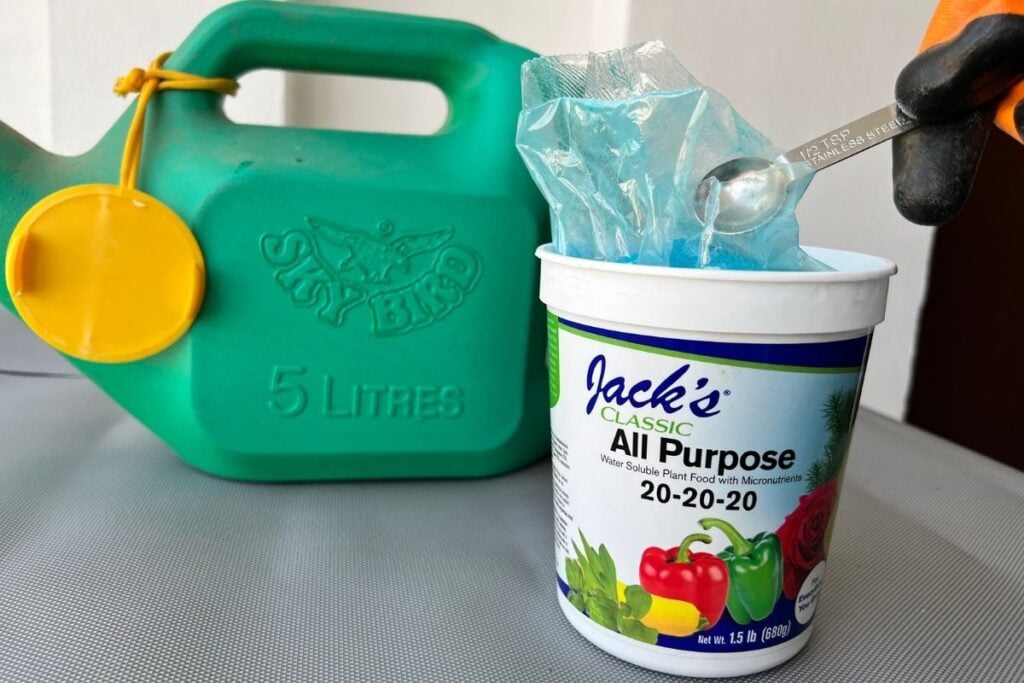
Hens and chick usually do not require fertilizing. They will be thriving while growing on infertile soil. Instead, rich soil makes them weak. But fertilizing Hens and Chicks can speed up their growth rate.
When the temperature starts rising above 50°F, they will begin to grow, first slowly, then vigorously, after coming out of winter hibernation.
Fertilizing little during the spring can speed up their growth from the beginning of spring. Feeding also encourages fast and more production of baby plants.
Some gardeners do not fertilize them unless they find some growth problem in them. You can do that too. If your Hens and Chicks are doing well without fertilizers, don’t feed them.
But, if you ever find that the Hens and Chicks are not growing at their average pace, fertilizing will increase their pace.
Use a mild, balanced liquid fertilizer. Even if it is mild, dilute it with water to make the strength half and then apply it.
Do it only once a year in the spring if you are a beginner. If you practice daily fertilization, feed them once a month during spring and summer.
Also read: Do Hens And Chicks Need Fertilizer? (+Best Fertilizer For Hens And Chicks)
Remove the Chicks from time to time.
You can plant the Hens and Chicks anytime except during the hot summers and cold winters.
Within a couple of months, the Hens and Chicks will reach their potential. When the temperature rises above 50°F, it will start to multiply. You must separate those offsets from time to time to give the Hens extra space to multiply.
If you do not separate them, they will keep producing Chicks. At one time, they will become overcrowded and fight for space.
As a result, the plant will slow down its growth and multiplication rate due to a lack of space. The more space they get, the faster Hens and Chicks will grow and produce more offsets.
Remove the daughter plants that reached 1 inch in diameter. They are perfect for transplantation. To remove the baby plants, extract them in clusters. It will help them to survive the transplantation shock.
Also read: Do Hens And Chicks Multiply? (How Fast, How Much)
Maintain a distance of about 4 to 6 inches between each plant.
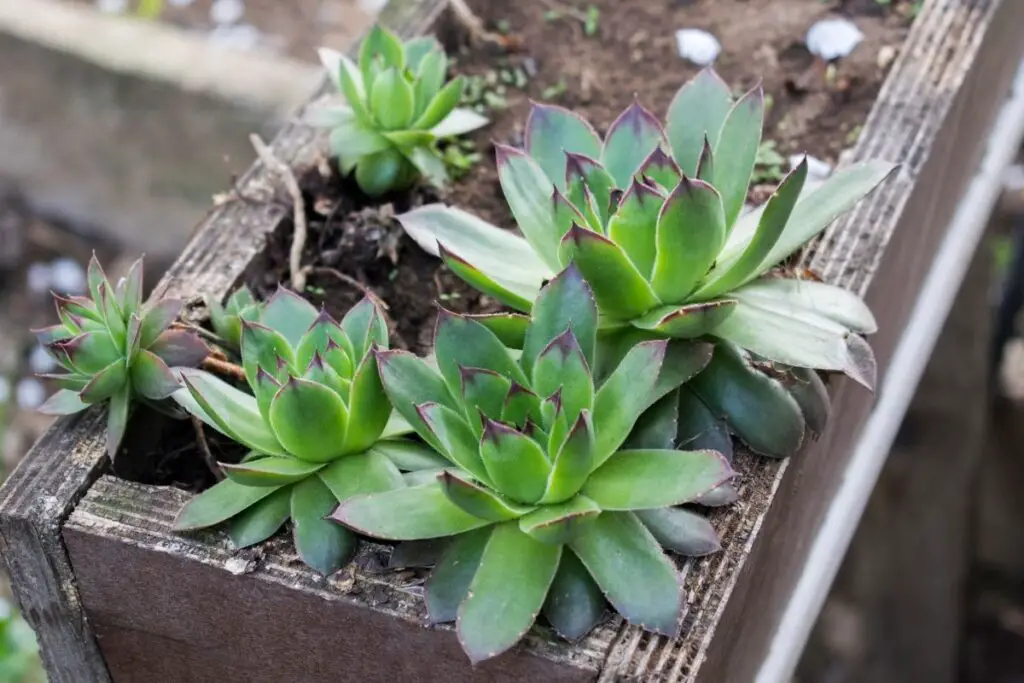
This care tip is associated with the previous point. Without adequate space, Hens and Chicks will fight for growth. They won’t grow tall. But they are groundcovers.
Within a few months after planting, they will spread about 6 to 18 inches wider. They will quickly cover up all open spaces in the ground around by spreading and multiplying.
So, you need to maintain a space of about at least 4 to 6 inches. It will be enough for them for rapid growth and spreading.
Hens and Chicks don’t need to fight for more space with appropriate space in between. They will continue growing normally or even faster if all their basic requirements are fulfilled.
Final thoughts
No matter how easy Hens and Chicks are to care for, some aspects can motivate them to increase their growth rate. If the plant continues to grow without facing any stress, it will grow faster within a few months.
But if they are facing constant stress, they will not grow quickly. Sometimes, it will take a year to grow with repeated stress like overwatering, full shade, or over-feeding.
Give the plant full or partial sunlight, water once a week, and feed them only once a year in spring. Along with these, give them enough space to grow well.
With a good amount of space, they will keep growing enthusiastically. With proper care and room, Hens and Chicks will also produce many offsets quickly in one season.
However, Hens and Chicks will grow slowly or won’t grow at all during the winter. It is their resting period so, they will remain dormant.
Reference: Wikipedia, Iowa State University of Science and Technology, The University of Arkansas Division of Agriculture, NSDU, The Ohio State University, Missouri Botanical Garden.
